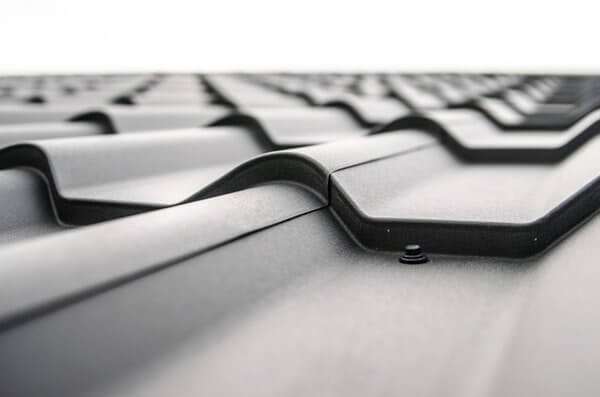Home Inspection 101 Inside The Inspectors Head : Roof Inspections
Featured Blog Post Written By Aaron Borsch from A Buyer’s Choice Home Inspections
Last blog I talked about the nuances of costs of repairs on houses, and I said I would start to break down some of the more major categories of concerns.
Like I said last time there are a LOT of items that can cost money, and its hard to go over every single one of them.
The Roof
Whenever I ask someone what is an important part to make sure its functioning without a problem, clients always say the roof. And with good reason, mean it keeps the outside elements from ending up inside the house. In particular, the rain.
Roof Replacement Cost –
A typical, standard roof to replace completely can cost anywhere from $10,000 to $15,000, for a standard asphalt shingle roof. And that is just the material, not including sheathing or structure repair if required.
A roof has two elements that wear on it. First of all the rain, which can wear on the material. Secondly the UV from the sun, which can cause roofing material to warp. After a material warps, when it rains next, it may penetrate.
When inspecting a roof, an inspector will first and foremost determine the condition of the material, and determine if any incorrect installation can be visually detected. This may include improper fasteners, wrong shingles, bad detailing, etc. All of those can allow moisture to penetrate.
What inspectors can’t do, is tell you how old the roof is. Unfortunately there isn’t a installation date printed anywhere. There are also a lot of items which can affect the roof, so we can’t tell you exactly how much longer a roof will last. A typical items that heavily effect the life of a roof is the weather year over year. Another is how much vegetation is overhanging the roof, due to shedding of material onto the roof which may cause it to wear at an accelerated rate.
If the roofing material is in poor condition, or installation is done incorrectly, obviously only replacement of the material will be able to fix the problem.
However it the roofing material is in good condition, very often you can fix a leak economically. This is due to the fact that typically leaks are through flashing, or other detailing areas. The last inspection I did which detected a leak was repaired for less than $1000.
Roofing Material Options
There 3 major type of roofing materials used predominantly on lower mainland houses.
Asphalt Shingles –
The least costly typically to install and repair. They require the least amount of maintenance (not no maintenance), and are the most common type. A typical life span of asphalt shingle roofs are 20-25 years.
They are usually covered with a granule material that protects the shingle from the effects of UV. If those granules start to fall off, the UV can start to cause shrinkage on the tile, which would start to create penetration points in the roof.
They can come in different grading of materials, from 15 year shingles to 40 year shingles. However thats only the warranty on the material only, and most warranties do not including standard weathering. Therefore they can still wear at the given 20-25 year rate based on weather and surrounding vegetation.
Wood Shakes –
Wood shakes are more expensive to install than Asphalt Shingles, and have a different installation method. They do not use the normal wood sheathing an asphalt single roof would use, because wood shakes require air flow below the material. Underneath in the attic is usually a felt member or building paper to allow vapour to evaporate, hence reducing chances of rot
In the lower mainland, most wood shake roofing material will last approx 20 years, and thats with maintenance. This material does require frequent maintenance which includes keeping it clean, adding resins, or inspecting for splits. Most people convert their roof to asphalt shingles once the wood shakes roof requires replacing due to cost vs how much life you can get on it.
The material also wears with the sun, which will cause the shingles to dry and crack, and allowing moisture to penetrate. These can be spot repaired with metal shims, and its not unheard of to see several metal shims on a wood shake roof. Also the ridge cap, or the peak of the roof, typically wears the fastest, and its also common to need to replace the cap prior to any of the other material.
An inspector has a very difficult time walking on a wood shake roof due to the high danger of slipping off of it, or breaking the shingles. So don’t be surprised if an inspector is unable to walk on this roof.
Concrete Tile –
This is the most expensive roofing material out of the 3. It is roofing tiles that have been made of concrete. They can come in a variety of styles, and sometimes different colours as well. They can even be made to resemble clay tiles. They do not wear as easily with the sunlight which is good, but can still have cracks form from overheating. They also can take damage from physical impact of debris.
Most companies will guarantee the roofing material for 40 years, and they are considered the longest lasting roofing material available so far. When pieces do break, they can be replaced individually, which can cut down the costs. It is very expensive to convert to a concrete tile roof due to additional structure reinforcement required due to the weight of the material.
Like wood shakes, it is very difficult for inspectors to walk on concrete tile roofing material. For the same reasons, there is an increased change of breaking the tile, or slipping on the material.
Next Time
I will go over another category that I get asked a lot about when inspecting houses.



